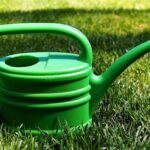Irrigation Water Solutions explained
Irrigation Water Solutions in Great basin areas face challenges such as reduced farm yields, receding groundwater aquifers, and the need for water restrictions
The Great Basin’s Thirst: A Race Against Time
Imagine a future where the Great Basin’s iconic landscapes are parched, its ecosystems struggle to survive, and the communities that rely on its water face a desperate shortage. This isn’t a fictional dystopia, but a stark reality we’re facing due to climate change.
Our snowpack, the lifeblood of the Great Basin, is melting earlier and faster than ever before. This leaves us with less water to sustain our communities, ecosystems, and agricultural needs.
But there’s hope! We can fight back against the drying Great Basin by embracing solutions. By working together, we can:
- Adopt water-wise practices in our homes and gardens.
- Explore innovative irrigation techniques to maximize water efficiency.
- Implement smart policies that promote water conservation and sustainable use.
- Support organizations like the Active Climate Rescue Initiative, who are actively working to address this challenge.
The Active Climate Rescue Initiative is leading the charge in tackling the Great Basin’s water woes. They are tirelessly working to find solutions and advocate for change.
We have a chance to turn the tide and ensure a sustainable future for the Great Basin. It’s time to act. Join us in this race against time!
The Great Basin’s Thirst: A Race Against Time
TL;DR: The Great Basin is facing a serious water shortage due to climate change and increasing demands. This article explores the challenges, potential solutions, and the efforts of organizations like the Active Climate Rescue Initiative to address the situation.
A Cycle in Trouble
The Great Basin, a vast region covering parts of the Western United States, is known for its dry climate and unique ecosystems. Water is a precious resource here, moving through a cycle that starts with evaporation from lakes and streams, then forms clouds that release rain and snow. This precipitation nourishes plants, replenishes aquifers (underground water storage), and flows into rivers and lakes.
However, climate change is disrupting this delicate balance. Higher temperatures mean more evaporation, leaving less water in lakes and streams. The snowpack, which serves as a vital water reservoir in the spring, is melting earlier and faster, reducing the amount of water available throughout the year.
Facing the Consequences
This water shortage has far-reaching consequences. Farmers struggle to grow crops, leading to reduced yields and economic hardship. The groundwater aquifers that supply drinking water to many communities are shrinking, raising concerns about future access to clean water. And as water becomes scarcer, communities are forced to implement water restrictions, limiting how much people can use.
How Climate Change Impacts the Great Basin Water Cycle
Climate change is not only making the Great Basin drier, but also making the water cycle more unpredictable. The region is experiencing more extreme weather events, with intense rainstorms and periods of drought alternating more frequently. This can lead to flooding in some areas and even more severe water shortages in others.
H3: The Active Climate Rescue Initiative
Organizations like the Active Climate Rescue Initiative are working tirelessly to address the water challenges in the Great Basin. They are developing innovative solutions to conserve water, enhance water management practices, and restore ecosystems.
Finding Solutions: A Race Against Time
Addressing the Great Basin’s water shortage requires a multi-pronged approach.
H3: Water Conservation
H4: Simple Changes
Individuals and communities can play a crucial role by adopting water-saving habits. This includes using low-flow showerheads and toilets, fixing leaks, watering lawns efficiently, and choosing water-wise landscaping.
H4: Smart Irrigation Systems
Investing in smart irrigation systems can help farmers and homeowners apply water more efficiently, reducing waste and maximizing water use.
H3: Innovative Irrigation Techniques
H4: Drip Irrigation
Drip irrigation delivers water directly to plant roots, reducing evaporation and minimizing water loss.
H4: Water Harvesting
Collecting rainwater in cisterns or using greywater from sinks and showers can supplement water supplies.
H3: Policy Measures
H4: Water Allocation
Updating water allocation policies to ensure fair and sustainable distribution is critical.
H4: Investing in Infrastructure
Investing in water infrastructure improvements, such as upgrading pipelines and reservoirs, can help minimize water loss and improve water management.
H3: Restoring Ecosystems
H4: Protecting Wetlands
Wetlands play a vital role in filtering water and replenishing groundwater. Protecting and restoring wetlands is crucial for maintaining water quality and quantity.
H4: Reforestation
Planting trees helps slow down runoff, allowing water to infiltrate the soil and recharge groundwater aquifers.
Summary
The Great Basin is facing a severe water shortage fueled by climate change. The impact is felt across the region, affecting agriculture, water supplies, and overall quality of life. However, there is hope. By embracing water conservation practices, exploring innovative irrigation techniques, implementing smart policies, and supporting organizations like the Active Climate Rescue Initiative, we can mitigate the effects of climate change and ensure a sustainable future for the Great Basin.
More on Irrigation Water Solutions…
- ## SEO Keywords: Irrigation Water Solutions & Climate Change Impacts
- General
- Irrigation water solutions
- Climate change and water scarcity
- Sustainable irrigation
- Water conservation in agriculture
- Drought-resistant crops
- Water management in a changing climate
- Climate-smart irrigation
- Water security in agriculture
- Climate change impact on irrigation
- Water resource management under climate change
- Specific Solutions
- Drip irrigation systems
- Sprinkler irrigation systems
- Micro-irrigation
- Water harvesting systems
- Smart irrigation controllers
- Water-efficient landscaping
- Water reuse technologies
- Gray water systems
- Desalination technology
- Water storage solutions
- Irrigation scheduling software
- Water audits and analysis
- Water footprint analysis
- Precision irrigation
- Crop water requirements
- Soil moisture sensors
- Climate Change Impacts
- Climate change impacts on water availability
- Drought monitoring and forecasting
- Climate-induced water stress
- Extreme weather events and irrigation
- Water quality degradation
- Saltwater intrusion
- Rising temperatures and irrigation demand
- Climate change adaptation in irrigation
- Water scarcity and food security
- Climate change and agricultural sustainability
- Target Audience
- Farmers
- Agriculture businesses
- Irrigation professionals
- Water resource managers
- Environmentalists
- Government agencies
- Water conservation organizations
- Homeowners
- Landscape architects
- Municipalities
- Location-Specific
- Irrigation water solutions in [region/state/country]
- Climate change impacts on agriculture in [region/state/country]
- Water conservation strategies for [region/state/country]
- Drought mitigation in [region/state/country]
- Long-tail keywords
- Best irrigation systems for drought conditions
- How to reduce water usage in irrigation
- Benefits of smart irrigation systems
- Climate change and water scarcity in California
- Water conservation tips for home gardens
- Sustainable irrigation practices for commercial agriculture
- Please note:** This list is not exhaustive and should be used as a starting point. You can further expand this list by considering specific crops, regions, technologies, and target audience needs.




